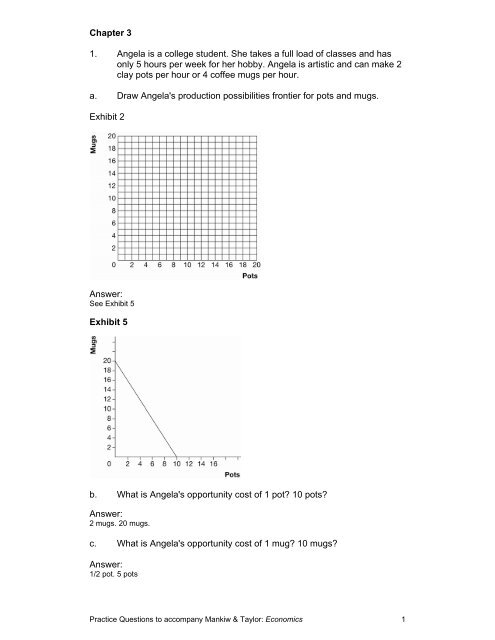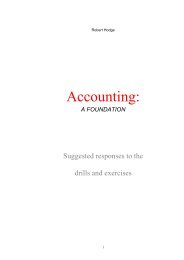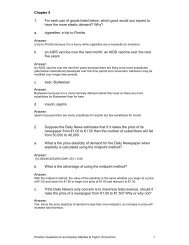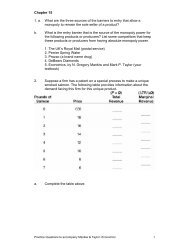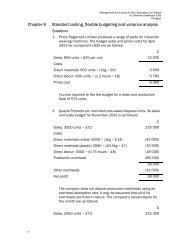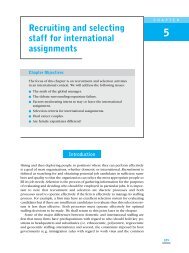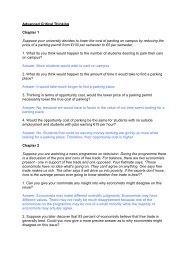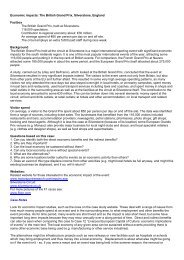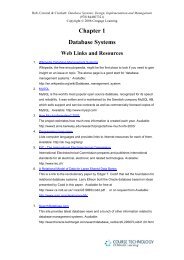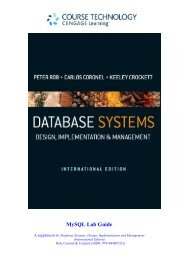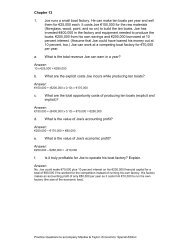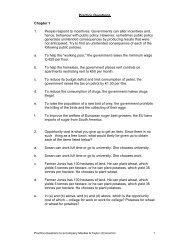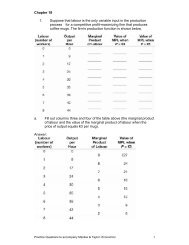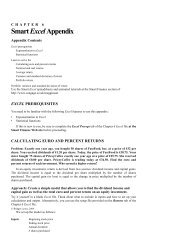Questions & Answers
Questions & Answers
Questions & Answers
You also want an ePaper? Increase the reach of your titles
YUMPU automatically turns print PDFs into web optimized ePapers that Google loves.
d. Why is her production possibilities frontier a straight line instead ofbowed out like those presented in Chapter 2?Answer:Because Angela’s productivity in pot and mug production is constant – it doesn’t depend onhow many mugs or pots she is making. Therefore the opportunity cost of mugs in terms ofpots is constant (and, of course, so is the opportunity cost of pots in terms of mugs).2. Suppose a worker in Germany can produce 15 computers or 5 tonnesof grain per month. Suppose a worker in Poland can produce 4computers or 4 tonnes of grain per month. For simplicity, assume thateach country has only one worker.a. Fill out the following table:Answer:b. Graph the production possibilities frontier for each country in Exhibit 3.Exhibit 3Answer:See Exhibit 6.Practice <strong>Questions</strong> to accompany Mankiw & Taylor: Economics 2
l. How would your analysis change if you assumed, more realistically,that each country had 10 million workers?Answer:It would not change absolute advantage or comparative advantage, or any of the results ofthe analysis. It would just change the scale in the previous two graphs by a factor of 10million.3. Suppose a worker in the United States can produce 4 cars or 20computers per month while a worker in Russia can produce 1 car or 5computers per month. Again, for simplicity, assume each country hasonly one worker.a. Fill out the following table:Answer:b. Which country has the absolute advantage in the production of cars?Computers?Answer:United States because one worker can produce 4 cars compared to 1. The United Statesbecause one worker can produce 20 computers compared to 5.c. Which country has the comparative advantage in the production ofcars? Computers?Answer:In both, the opportunity cost of 1 car is 5 computers. In both, the opportunity cost of 1computer is 1/5 of a car. Therefore, neither has a comparative advantage in either good.d. Are there any gains to be made from trade? Why?Answer:No. Each can get the same trade-off between goods domestically.e. Does your answer in (d) above help you pinpoint a source for gainsfrom trade?Answer:Yes. There needs to be differences in opportunity costs of producing goods across countriesfor there to be gains from trade.Practice <strong>Questions</strong> to accompany Mankiw & Taylor: Economics 5
f. What might make two countries have different opportunity costs ofproduction? (Use your imagination. This was not directly discussed inChapter 3.)Answer:The availability of resources or technology might be different across countries. That is,workers could have different levels of education, land could be of different quality, capitalcould be of different quality, or the available technology might be different.Practice <strong>Questions</strong> to accompany Mankiw & Taylor: Economics 6


